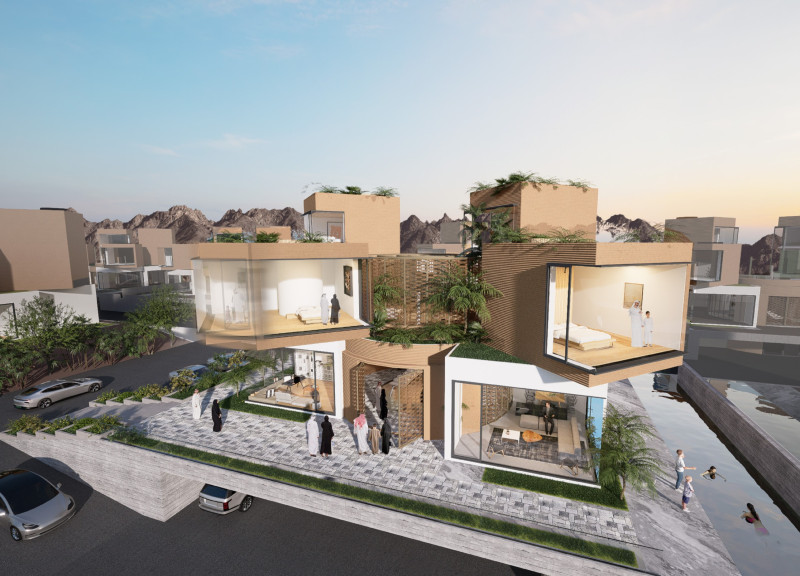5 key facts about this project
From a functional perspective, the project is designed to accommodate diverse activities, making it a hub for community engagement. The layout promotes flexibility, with spaces that can adapt to varying requirements, whether for gatherings, cultural events, or educational purposes. This versatility is a fundamental element of the architectural design, allowing it to serve multiple demographics and encourage communal interaction. The careful organization of spaces ensures that all areas are easily accessible while maintaining a flow that is intuitive for users.
Key elements of the project include the facade treatment, which employs a harmonious blend of materials designed to complement the surrounding architecture. The use of locally sourced materials not only ties the structure to its geographical context but also emphasizes an eco-conscious approach to construction. Materials such as reclaimed wood, textured masonry, and glass elements work together to create an inviting atmosphere that encourages occupants to connect with both the interior and exterior environments. The transparency offered by strategically placed glass creates visual connections to the outdoor space, enhancing the user experience while inviting natural light to permeate the interior.
The design approach adopted by the architects is distinctly characterized by an emphasis on sustainability. The incorporation of green roofs and energy-efficient systems further exemplifies the commitment to environmentally responsible design. These features not only improve the building's efficiency but also contribute to the overall ecological health of the area by promoting biodiversity and reducing urban heat. The careful selection of materials and building practices showcases an understanding of the project’s environmental impact, promoting a responsible architectural ethos.
Another distinctive aspect of the project is its incorporation of landscaping that integrates with the built environment. The exterior spaces are designed to enhance the architectural narrative, providing opportunities for recreation and social interaction. Pathways woven through the landscape connect various areas of the facility, inviting users to explore and engage with their surroundings. This emphasis on outdoor connectivity is a testament to the architects' understanding of the role that green spaces play in enhancing community well-being.
The project's architectural sections reveal a carefully considered verticality, where the height is used to create a sense of openness without compromising privacy in key areas. The interplay of light and shadow on the surfaces of the building adds to the overall experience, allowing for a dynamic relationship between the structure and its environment throughout different times of the day.
The combination of these design elements, alongside the ethical commitment to sustainability, results in an architecture that is not only visually appealing but also deeply contextualized. This project stands as a significant contribution to the architectural landscape, exemplifying how thoughtful design can facilitate community, respect for the environment, and cultural engagement.
For those interested in delving deeper into the architectural nuances of this project, exploring the architectural plans, sections, and design visuals can provide richer insights into the design processes and philosophy that guided its creation. Engaging with these elements will enhance understanding of the innovative solutions employed and their relevance within contemporary architectural discourse.


























